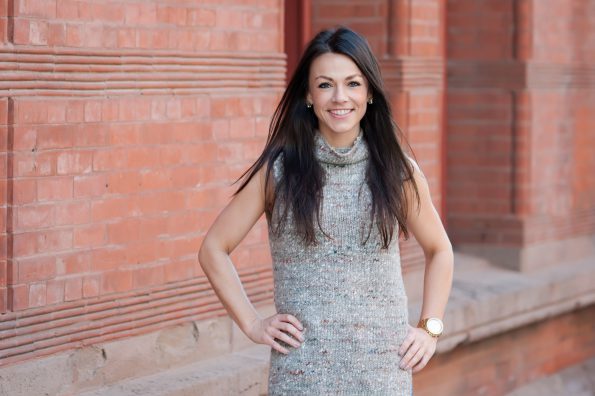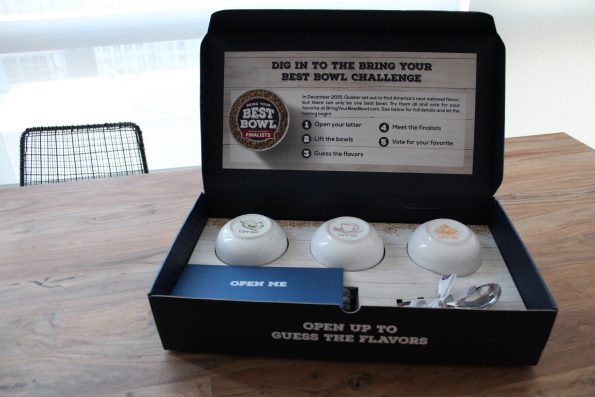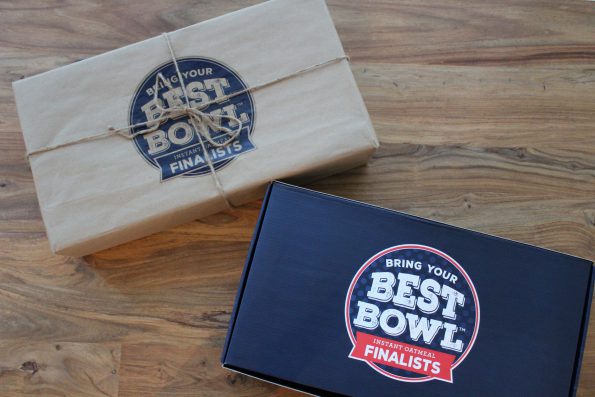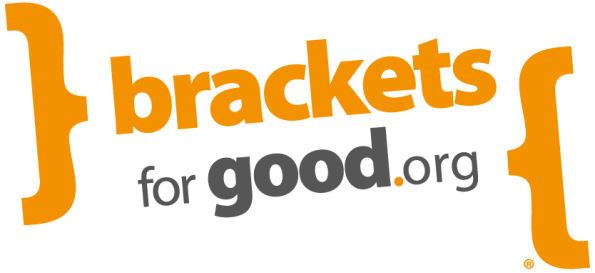Fast Forward - February 2017
MARKET SHARE
Ready, Set, Grow
To successfully scale a company, give every function equal attention
When your small business is successful enough to warrant expansion, what’s the best way to scale it? The business gurus at Northwestern University’s Kellogg School of Management say each aspect of the business must be managed simultaneously.
Rather than putting out one fire at a time, or solving problems as they pop up, everything must be tended to, says Ben Jones, a professor of entrepreneurship and strategy who serves as faculty director of the Kellogg Innovation and Entrepreneurship Initiative. “It’s operations, it’s marketing, it’s finance and it’s culture,” he says in a submission to The New York Times’ BrandStudio. “It’s the whole thing.”
Kellogg recently launched a “growth and scaling pathway” targeted to entrepreneurs, family business owners, executives and private equity employees who want to expand their business. Among the lessons shared with participants, Kellogg instructors offer this advice: When you’re building your growth plan and formulating a strategy for smooth expansion, work to first identify pain points where departments might intersect.
Operations Meets Marketing
Marketing teams have the brilliant ideas and the big dreams for a company’s success. If operations can’t—or won’t—deliver on the promises marketing makes, internal struggles can leak out into the public sphere.
Marketing Meets Research and Design
The marketing department shines when it comes to uncovering consumer desires. But if an organization is siloed, a lack of communication between marketing and R&D could prevent the creation of a product or service that the customer actually wants.
Research and Design Meets Finance
R&D sometimes gets the short shrift during scaling operations, as leaders want to funnel crucial dollars to other areas. Conversely, deep devotion to research and design/development can lead to busted budgets.
Finance Meets Operations
Your brilliant idea is getting money thrown at it, but that doesn’t mean you should take it all. Even the smallest of hiccups in a plan to grow bigger can lead to the bottom dropping out and your company declaring bankruptcy.
Operations Meets Culture
When the business is like a family, a distinct culture is formed. The same goes for everyone who was there “when it all began.” But scaling means finding the right person for the job, even if the right person comes with the “wrong mindset.”
To avoid or at least smooth out these speed bumps, be sure to communicate your plans and progress internally, to ensure everyone expresses and adopts common goals within their respective duties. Focus on what your company is good at, and make customer desires your canon. As your business expands, replace individuals with processes, and delegate duties to workers with accompanying incentives.
Five Minutes With Yvonne Lyngaas
Butterfly In The Sky
Yvonne Lyngaas, owner and CEO of Monarch & Company, shares her company’s secret to standing out
 Creative marketing agency Monarch & Company (PPAI 604192) is making inroads with major players such as Netflix and Quaker Oats. Owner and CEO Yvonne Lyngaas spoke with PPB about thinking big from the start, with an eye on securing major accounts through full, end-to-end service that differentiates her team from others in her field.
Creative marketing agency Monarch & Company (PPAI 604192) is making inroads with major players such as Netflix and Quaker Oats. Owner and CEO Yvonne Lyngaas spoke with PPB about thinking big from the start, with an eye on securing major accounts through full, end-to-end service that differentiates her team from others in her field.
Prior to founding Monarch, Lyngaas worked as a sales rep at a distributor firm in Illinois, and prior to that as an account coordinator for a Colorado distributor. And even though her firm is tiny—just Lyngaas and two others—the company is making a name for itself as a creative machine with huge ideas.
PPB When you started Monarch in 2009, what were your big goals for the company, and what tools or practices did you put in place to accomplish those goals?
Lyngaas My short-term goal for year one was to sell enough to break even with the salary I was making working for someone else. I accomplished this by focusing my time on Monarch during the day, and bartending at night and over weekends to network and supplement my personal cash flow.
I founded Monarch with every intention of working with the largest brands in the world. I wanted to build a creative merchandising agency that pushes our employees and clients to view promotional items in a way that is meaningful and impressive. In order to sit in that room with those large brands you have to be just that, so that’s what I did. Everything about Monarch looks like an agency, and agencies are our largest client base.
Despite the company’s evolution, our mission has stayed the same, which is how I accomplished things in the beginning and what I hold on to when things get rough.
PPB You’ve billed yourself as Supreme Office Ruler and Beverage Director. What role does your company’s unique culture play in your approach to working with clients?
Lyngaas We designated office titles because that is what our employees wanted to do. I cannot take credit for that! As I am results-driven and direct in my communication, I sometimes forget about the culture aspect of running a company. Anna Nguyen, our executive brand director, came on board earlier this year and has done a fantastic job creating a culture and environment that employees can thrive in. I stand behind her methodology and sprinkle in my style when appropriate.
PPB In addition to your pop-up shops, where customers can shop for the latest seasonal trends and products in the industry, what other retail trends have you embraced to introduce consumers/potential clients to your brand?
Lyngaas Packaging and kitting! Anytime we can add a custom ribbon, a hangtag, a woven label or a custom box to a project, we view it as a tremendous opportunity. Not only does it make for more impactful promotions, it also makes you invaluable to your client. In order to do this, you need to have graphic design skills and strong vendor relationships. Everyone at Monarch & Company is required to learn Adobe [software] programs for this reason, and we have a standard for how we work with vendors. For kitting, you need to have a strong packaging partner and fulfillment center. We have also found that having a print partner that will also do fulfillment provides more flexibility.
Another retail-inspired tool we use is a rotating web store as our company “catalog.” If you go to our website [www.monarchandcompany.com] and click on “Brainstorm Ideas” it will bring you to this site. This helps us stay in front of our clients and show them a demo site for their company pop-up store. It’s a good resource for our clients to use when they want to see new ideas without having a timeline or budget.
One thing we want to explore in 2017 is presenting apparel similar to how [industry supplier] SanMar presents it. They showcase apparel as a lifestyle, helping buyers visualize themselves in the apparel. This was brought to our attention by one of my mentors, Fred Hickman. He is elevating the way we need to think about apparel as a lifestyle and tying it back to the broader picture. We intend to focus on this more in 2017 in our proposals and in our rotating catalog.
PPB Quaker, Netflix and Zagat are on your roster now; what is your team’s mindset when pursuing and working with nationally recognized brands?
Lyngaas When we receive a request the first thing we think about is how we can differentiate ourselves, and how we can be creative not only in artwork but also with budget. We ask ourselves, “Can we cut the budget here to add a woven label?” or “What mockups would allow them to really visualize and connect with the concept or items?” Every proposal that goes out has creative slogans, taglines, extra graphics, etc., to make a bigger impression with the client.


PPB What has been your favorite project to date, and why?
Lyngaas The Quaker Bring Your Best Bowl kits, which we created for the company’s oatmeal flavor-creation contest that ran in late 2015 through the spring of 2016. They reflect how our company works at all stages of a project—fine-tuning the concept, laying out and suggesting creative packaging, print, product, fulfillment and impact. We combined almost every area of our offerings to show how we can streamline the buying process from concept to delivery and offer a fully integrated promotional product delivery process.
BRANDABLE

Slam Dunk
Co-branded national fundraiser turns charitable giving into friendly competition, March Madness-style
March Madness is one of the best times to reignite friendly rivalries, and since 2012 Brackets For Good has turned the competition into a charitable effort through nonprofit participation nationwide. Each spring, participating local nonprofit groups encourage their donors to out-fundraise “opponents” in order to advance in the bracket. Now the organization is pairing up with communications giant AT&T to sweeten the deal. While only local groups have participated to date, the partnership with AT&T now allows larger, national organizations to jump in.
Competing nonprofits play for free and keep donations received during tournament play no matter how many rounds they last. Additionally, the winner of this year’s tournament bracket will receive an additional $100,000 contribution from AT&T. Groups who participate also receive branded merchandise such as water bottles and t-shirts.
The Brackets for Good USA tourney, comprised of 64 national charities, and 11 local tournaments featuring 704 groups, will tip off on February 24. The game competition runs through March 31.
Brackets for Good, based in Indianapolis, has helped raise nearly $3 million for charities since its 2012 inception. “Brackets For Good exists because we believe that communities are strengthened when more people learn about and support charitable organizations that operate in service to the community,” says Matt McInytre, executive director and co-founder of Brackets For Good. “We’re thrilled to team up with AT&T to bring the excitement of Brackets For Good to nonprofits and nonprofit supporters across the nation.”
For more information visit bfg.org.
TECH TALK
Will Online Advertisers Say ‘Uncle’?
Digital companies are first to pursue solutions to the ad blocker phenomenon
When consumer irritation with digital advertising tipped the scales in favor of ad blockers, advertisers and websites alike began scrambling for a way back into their customers’ hearts. eMarketer estimates nearly a third of web users have employed ad blockers, and that number is expected to rise in 2017.
Rather than cave to ad blockers, Google is focusing on ways to eliminate the need for such services, including assigning lower rankings to sites whose content is tough to reach from search results. And the web giant, along with Facebook, has joined the ranks of companies and media associations in the Coalition for Better Ads.
The coalition, through its charter, pledges to create “consumer-based, data-driven standards” for advertisers to use to improve the consumer experience.

